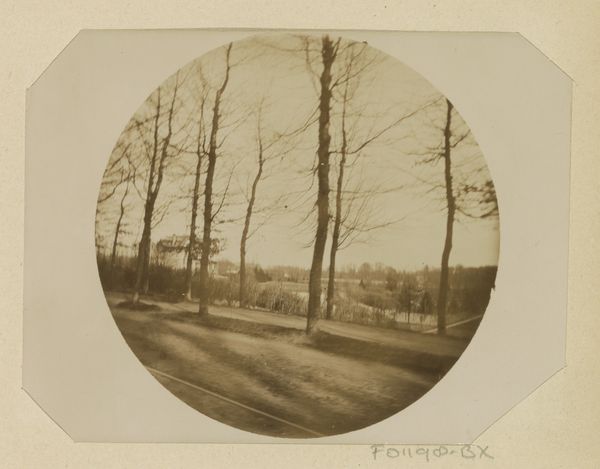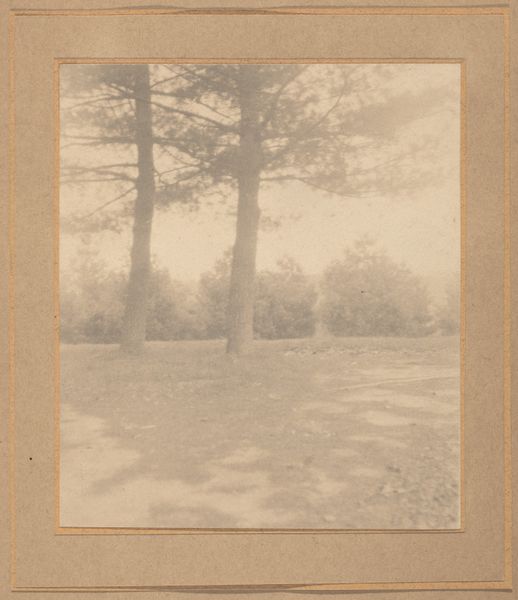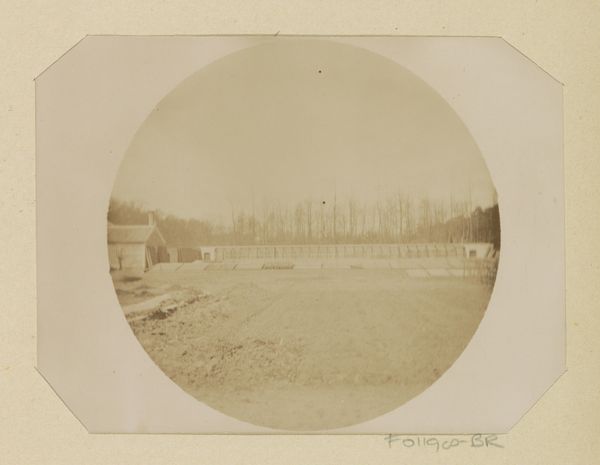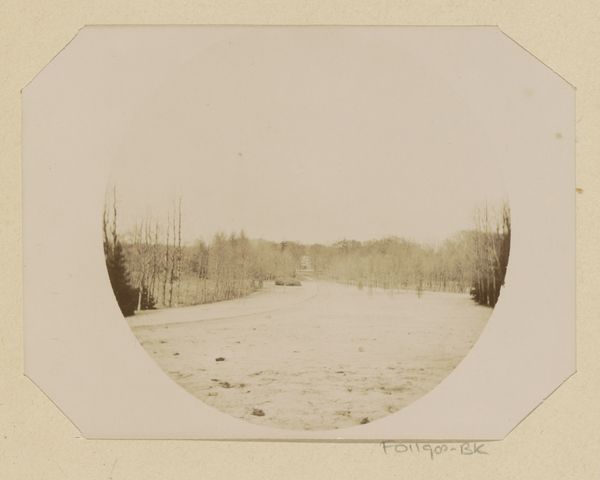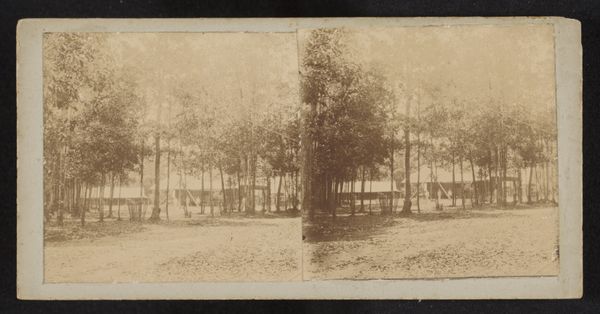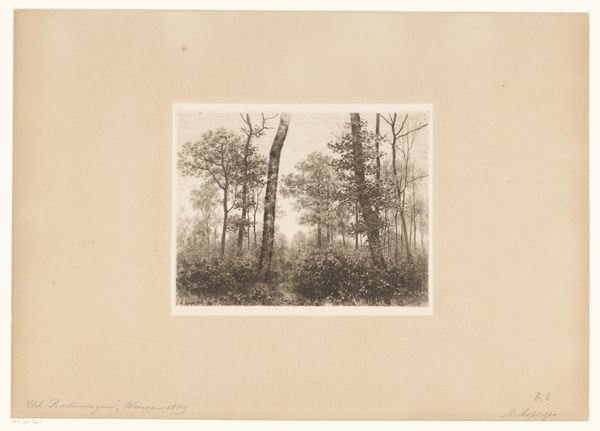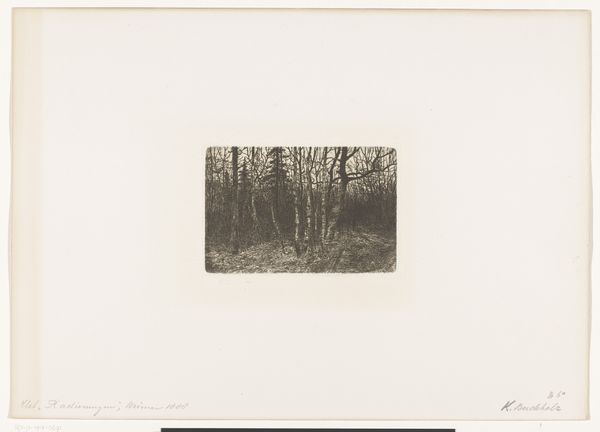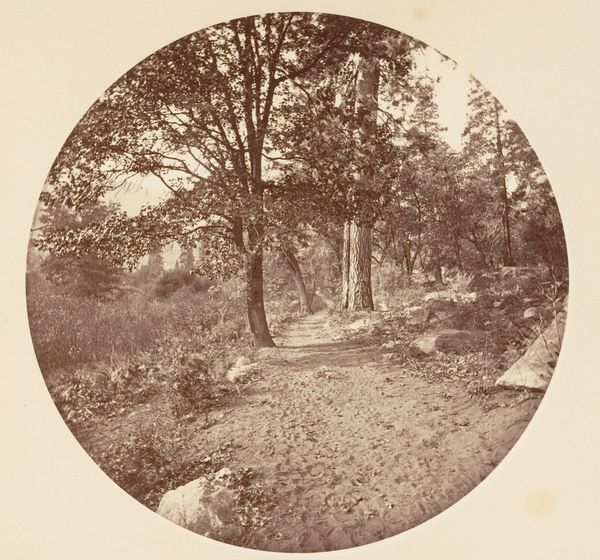
Dimensions: height 90 mm, width 117 mm
Copyright: Rijks Museum: Open Domain
Curator: Before us is a work titled "Parklandschap nabij Arnhem," placing it somewhere near Arnhem in the Netherlands. The piece is a photograph, dating roughly between 1889 and 1893, created by Johanna Margaretha Piek. Editor: It has a wonderfully melancholic, almost dreamlike quality. The monochrome palette really sets a pensive tone, doesn't it? Almost like a memory fading at the edges. The shape is unusual as well. Curator: Indeed. Photography, particularly landscape photography of this era, often symbolized a longing for an idealized natural past, untainted by industrial progress. It becomes a repository for memories and nostalgia. Here, Piek, using a photographic lens to emulate painterly, "plein-air" qualities, perhaps aims to create a sense of timeless tranquility within a rapidly changing world. Notice how the row of bare trees guide our eye. Editor: Yes, they're almost like gatekeepers, framing something just out of reach. Is that a river or perhaps just a continuation of the parkland in the background? It adds another layer of depth. They guide your gaze deep into the landscape. It’s a very compelling technique, using these natural architectural forms. Curator: That ambiguity is certainly part of the charm. Trees, historically, represent not just growth and connection to nature, but also our connection to ancestors, to wisdom gathered through time. By focusing on them during what seems like the dormant season, Piek hints at a world of cyclical renewal, waiting for spring's rebirth. Editor: The fact that it is a park is also interesting; are we seeing manicured nature, controlled and formed by mankind, not pure nature in and of itself? What does that tell us about that era? Curator: That's an excellent observation. Parks, during this period, functioned as deliberate attempts to reconcile nature with urbanization. The carefully planned elements of the park landscape act as symbols of social order, bringing artifice and structure to a natural setting. The park serves as a stage where interactions between culture and nature are being displayed and explored, a delicate interplay that is characteristic of late 19th century sensibility. Editor: That interplay certainly comes across. A bittersweet glimpse, capturing both beauty and that persistent ache for something perhaps lost. I would revisit that park in my thoughts over and over. Curator: I agree. There’s a layered depth that evokes continued contemplation.
Comments
No comments
Be the first to comment and join the conversation on the ultimate creative platform.
